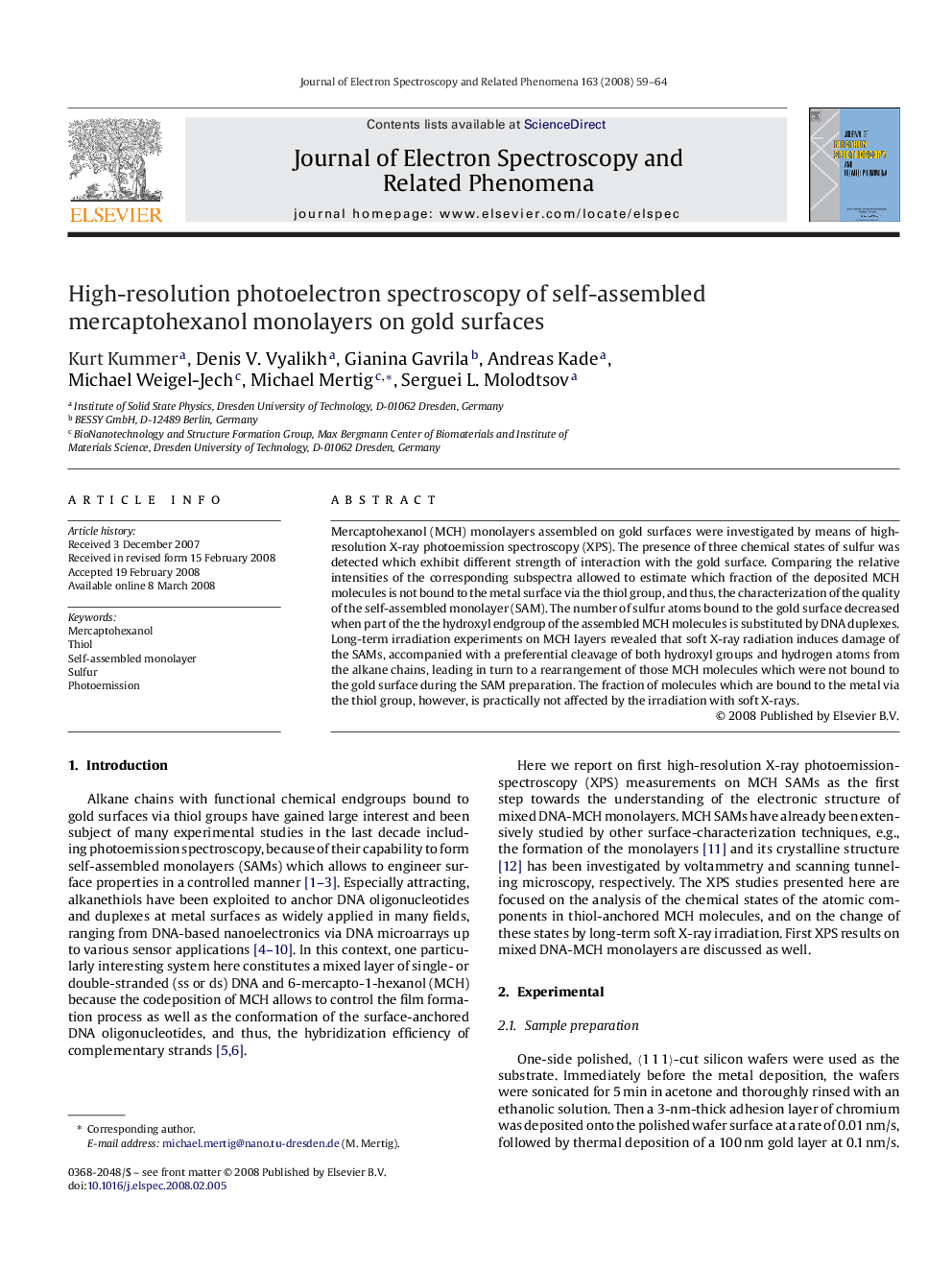| Article ID | Journal | Published Year | Pages | File Type |
|---|---|---|---|---|
| 5396896 | Journal of Electron Spectroscopy and Related Phenomena | 2008 | 6 Pages |
Abstract
Mercaptohexanol (MCH) monolayers assembled on gold surfaces were investigated by means of high-resolution X-ray photoemission spectroscopy (XPS). The presence of three chemical states of sulfur was detected which exhibit different strength of interaction with the gold surface. Comparing the relative intensities of the corresponding subspectra allowed to estimate which fraction of the deposited MCH molecules is not bound to the metal surface via the thiol group, and thus, the characterization of the quality of the self-assembled monolayer (SAM). The number of sulfur atoms bound to the gold surface decreased when part of the the hydroxyl endgroup of the assembled MCH molecules is substituted by DNA duplexes. Long-term irradiation experiments on MCH layers revealed that soft X-ray radiation induces damage of the SAMs, accompanied with a preferential cleavage of both hydroxyl groups and hydrogen atoms from the alkane chains, leading in turn to a rearrangement of those MCH molecules which were not bound to the gold surface during the SAM preparation. The fraction of molecules which are bound to the metal via the thiol group, however, is practically not affected by the irradiation with soft X-rays.
Related Topics
Physical Sciences and Engineering
Chemistry
Physical and Theoretical Chemistry
Authors
Kurt Kummer, Denis V. Vyalikh, Gianina Gavrila, Andreas Kade, Michael Weigel-Jech, Michael Mertig, Serguei L. Molodtsov,
